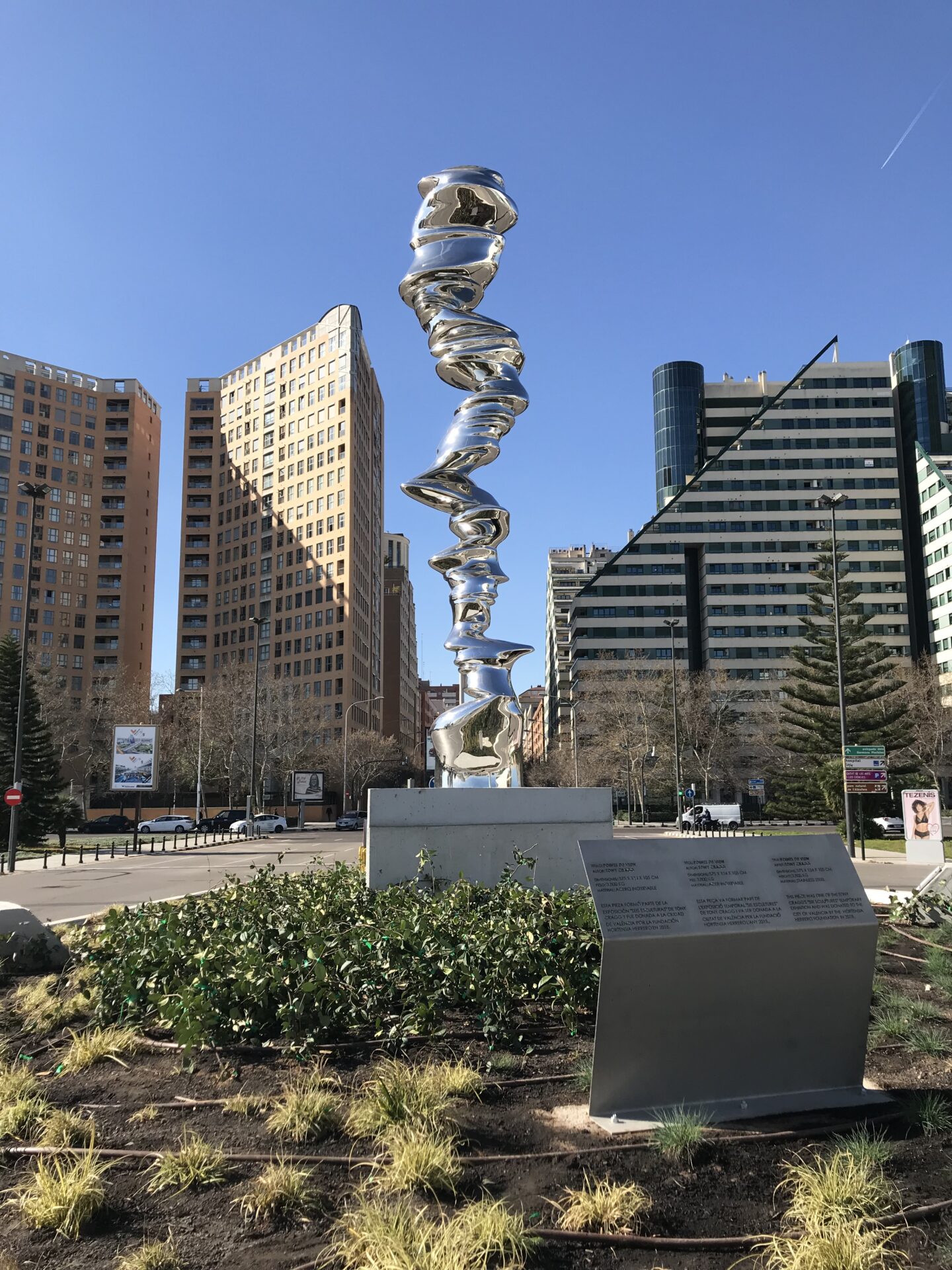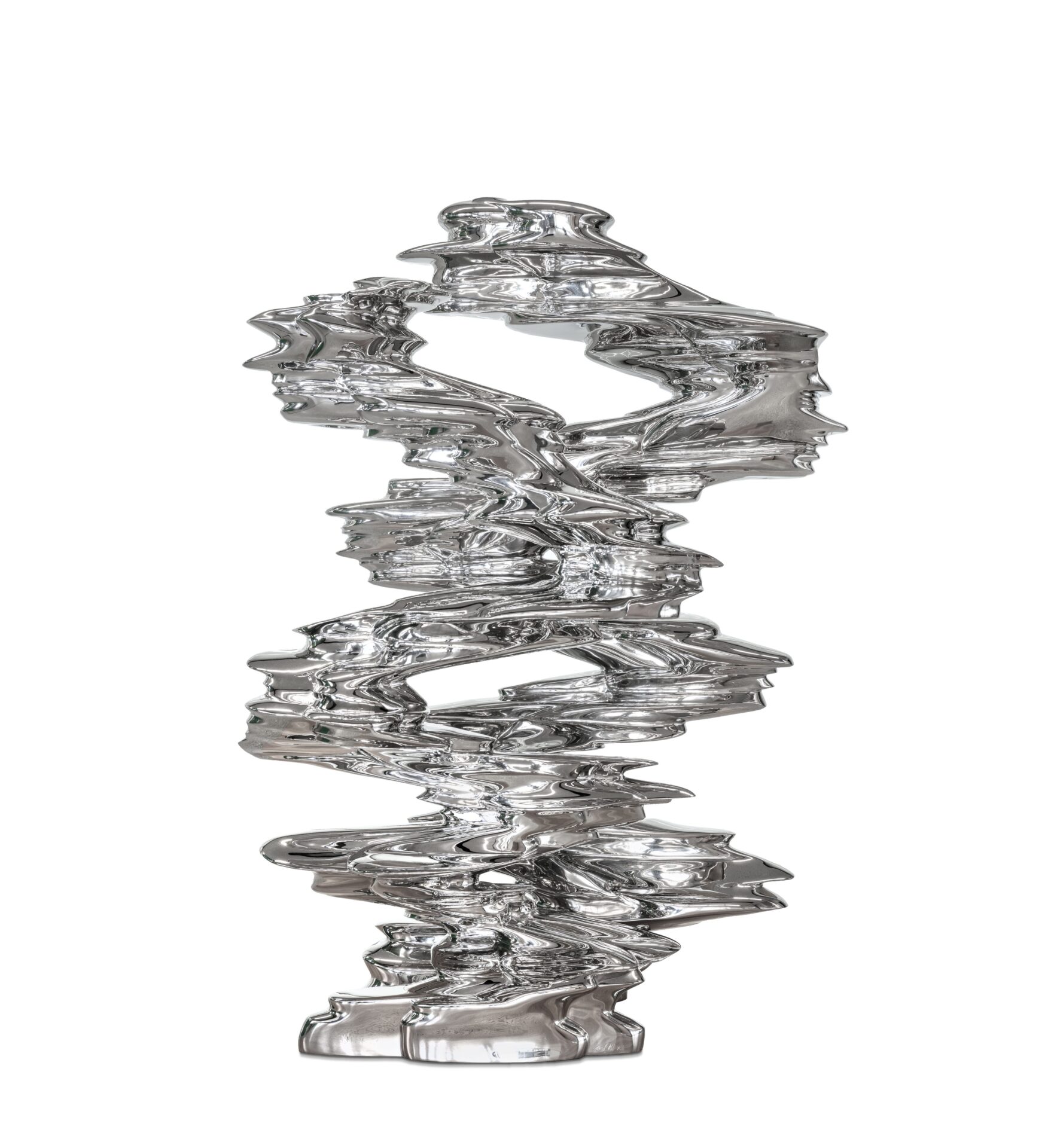Tony Cragg is an artist who thinks through materials. As he himself explains: “Materials play a very important part in our everyday lives. Without materials we wouldn’t be here. Materials are never wrong. If there’s something wrong, it’s in my mind.”1
Indeed, before beginning his artistic career, Cragg worked between 1966 and 1968 as a technician in a rubber laboratory. In 1977 he moved to the German city of Wuppertal, where he has lived ever since. There he began to produce a series of works from plastic materials which he collected on the banks of the Rhine and then used to form recognisable shapes, such as human figures or the island of Great Britain itself. These works were followed by others of a more sculptural nature, made up of various layers and strata of objects of industrial origin which he compressed into a kind of hodgepodge, undoubtedly influenced by his passion for geology. As he himself says: “I was thinking of geology. The distribution of materials. Particles as molecules, cells in a body, stars in the sky. At a certain point, the particles reach such a density that they become layers. Stratification gives an impression of time and has something to do with growth.”
This contrast between industrialisation and nature that is so strongly present in Wuppertal can be seen as a metaphor for Cragg’s own work, as it adapts forms that can be found in nature (his passion for geology has even led him to collect fossils), while at the same time Cragg embodies those forms through such varied industrial materials as bronze, stainless steel, glass fibre, wood and glass.
Cragg’s work begins with drawing. In two dimensions everything is possible, there are no limits in drawing, but it is when he tries to carry those figures into three dimensions that the limitations emerge, and here materials play a substantial role. The artist himself explains this creative process as follows: “I have to have an idea, more or less, of where I want to go, but it’s fantastic when you reach a destination that you weren’t able to anticipate. That happens with some of the best pieces. And then you say: ‘Wow, this is a completely new experience for me.’ That’s the most exciting part of my job.”
His work led him to win the Turner Prize in 1988 and to represent Great Britain at the Venice Biennale the same year. Moreover, in the course of his career he has received innumerable honours, including Chevalier de l’Ordre des Arts et des Lettres of France, Commander of the Order of the British Empire and Officer’s Cross of the Order of Merit of the Federal Republic of Germany, among many others, and he is a Member of the Royal Academy of Arts in London. He was knighted in 2016, acquiring the title Sir.
Points of View is another of his iconic works, on which he has produced several variations. The title perfectly sums up one of the main characteristics of Tony Cragg’s sculptures, as these have to be seen from very different points of view. You need to walk round them the full 360 degrees to get a complete view. One of them, which was included in the exhibition organised by the Hortensia Herrero Foundation in the City of Arts and Sciences in Valencia and was subsequently donated to the city of Valencia by Hortensia Herrero, is located on the Puente de Monteolivete.
Runner is another of those iconic works that Tony Cragg returns to again and again. A version in stainless steel one and a half metres high was the first work of his to be included in the Hortensia Herrero collection. In the artist’s own words: “The origin of Runner comes from the elliptical columns that become more dynamic. One part is vertical and the other is like a ziggurat, but put together they counterbalance each other, and then you have the feeling that our lives are like this. It reflects a kind of fear, of restlessness. I am an anxious, restless person. It’s my nature. I feel in my head that things come and go, and I like that and I don’t like it, and I want to do this and I don’t want to do it. I have lots of things running around in my head.”

